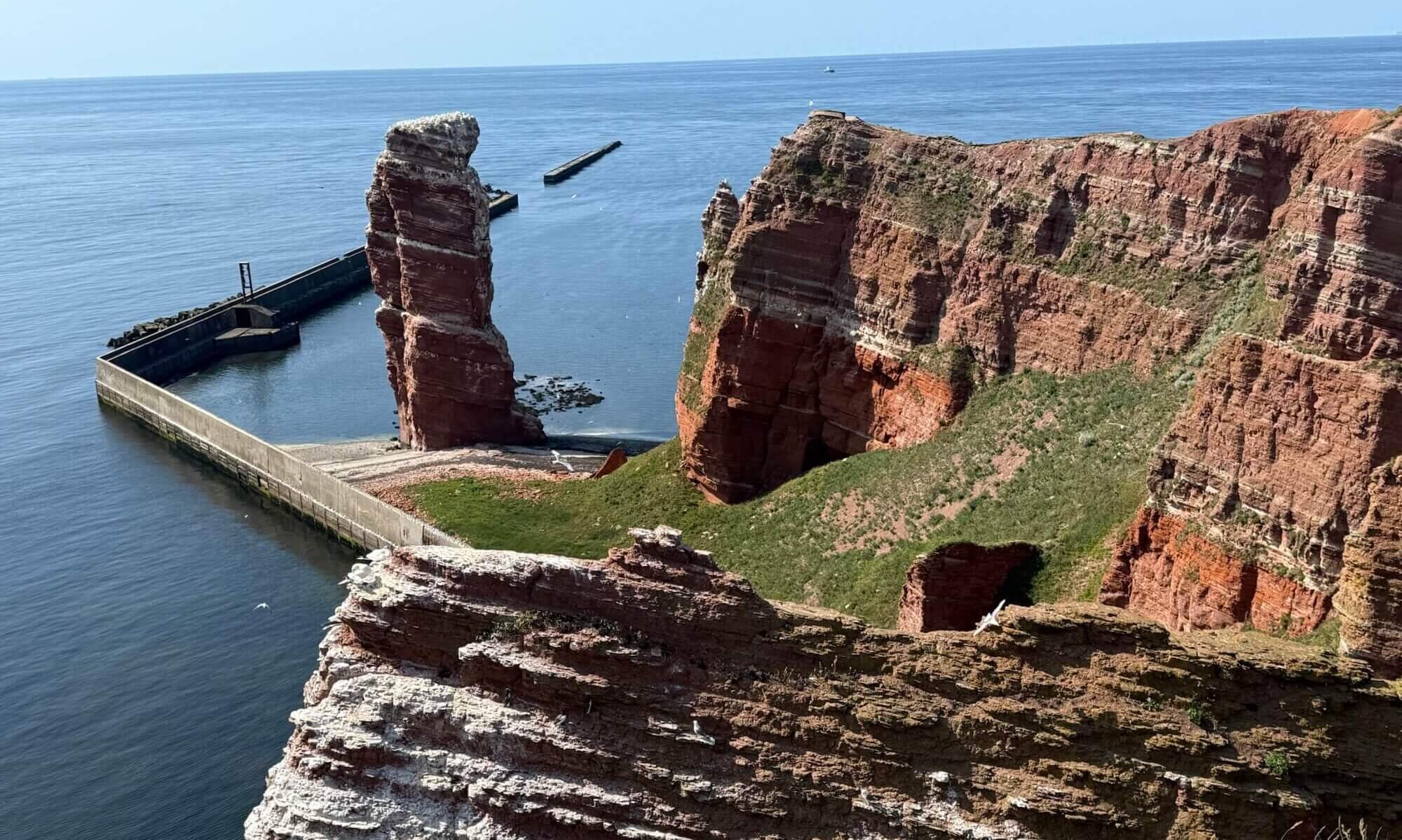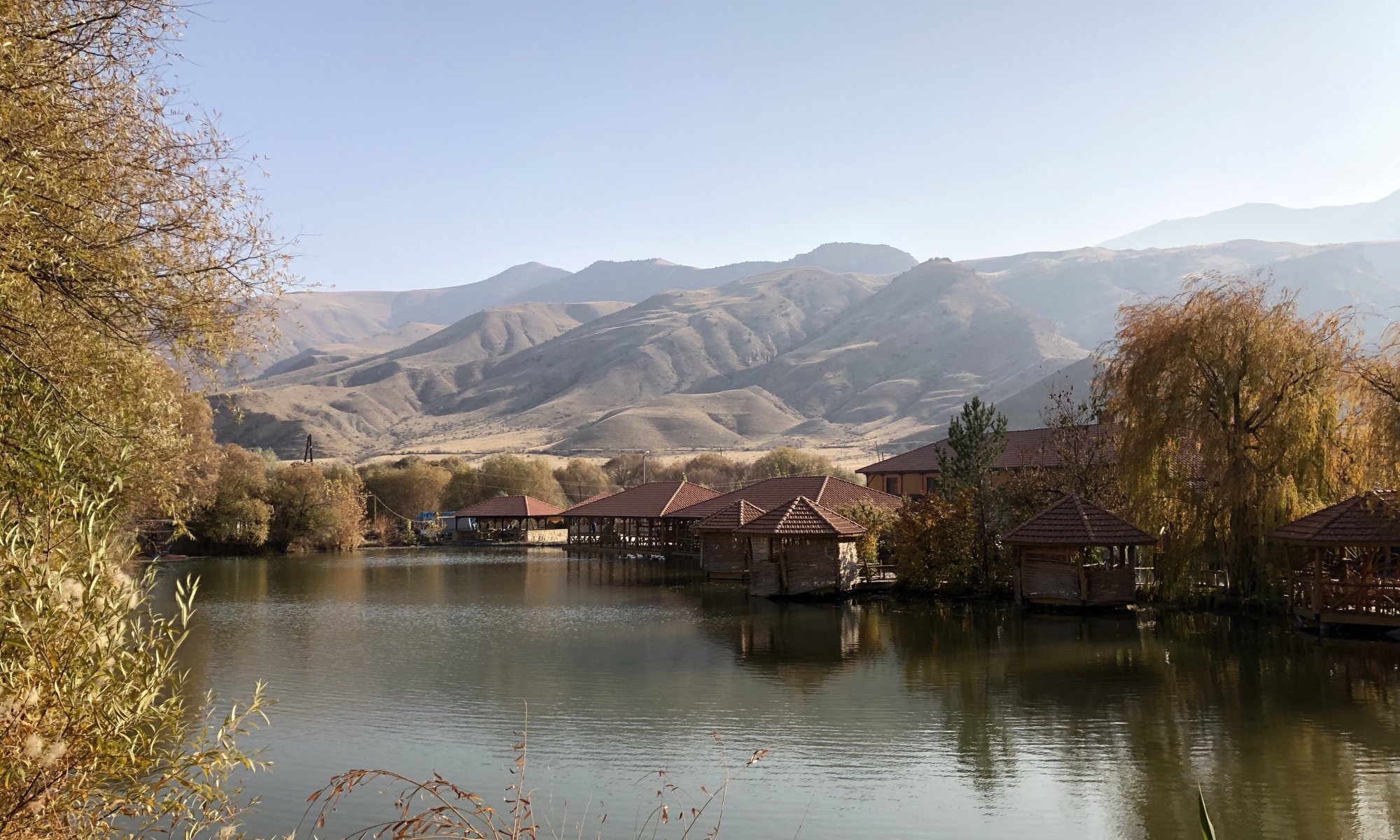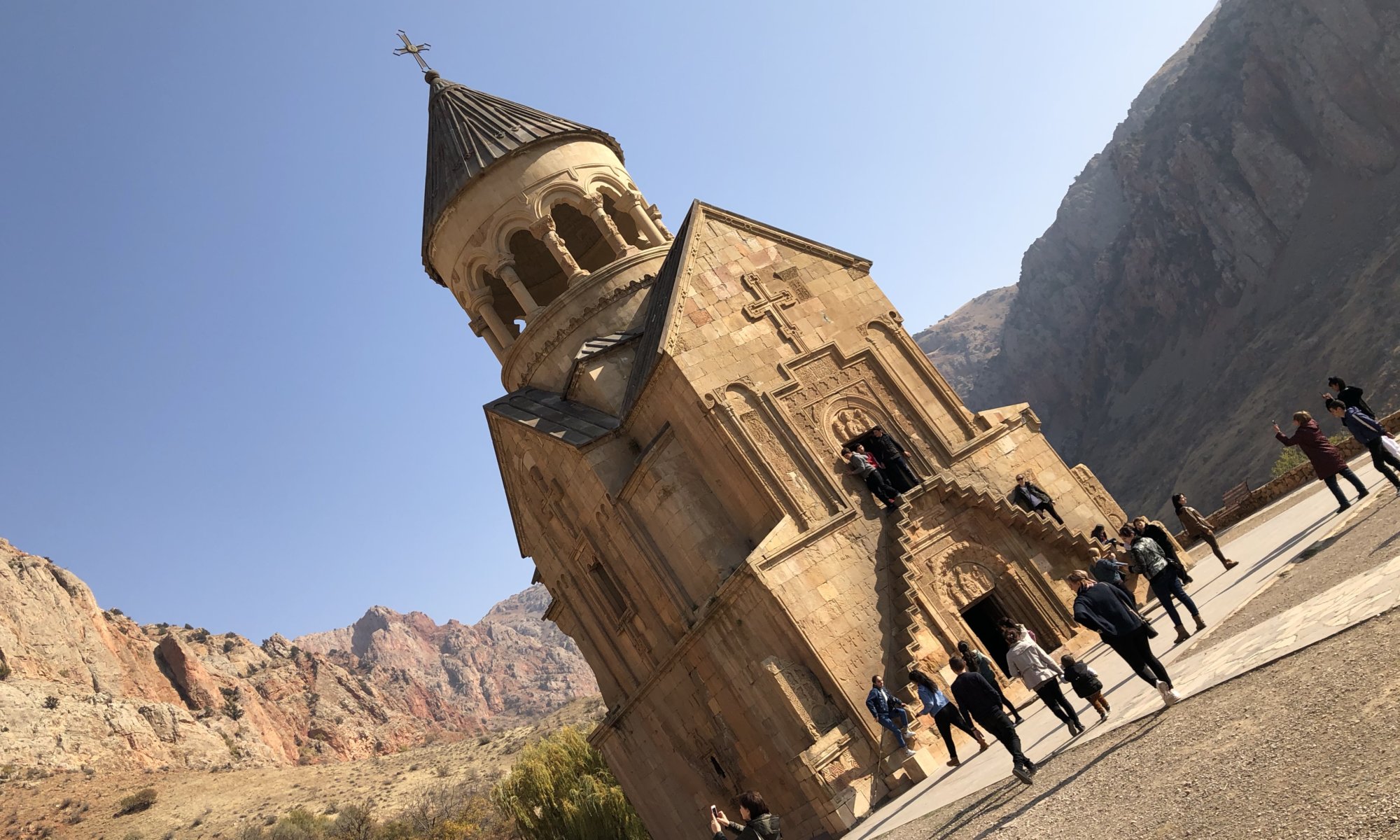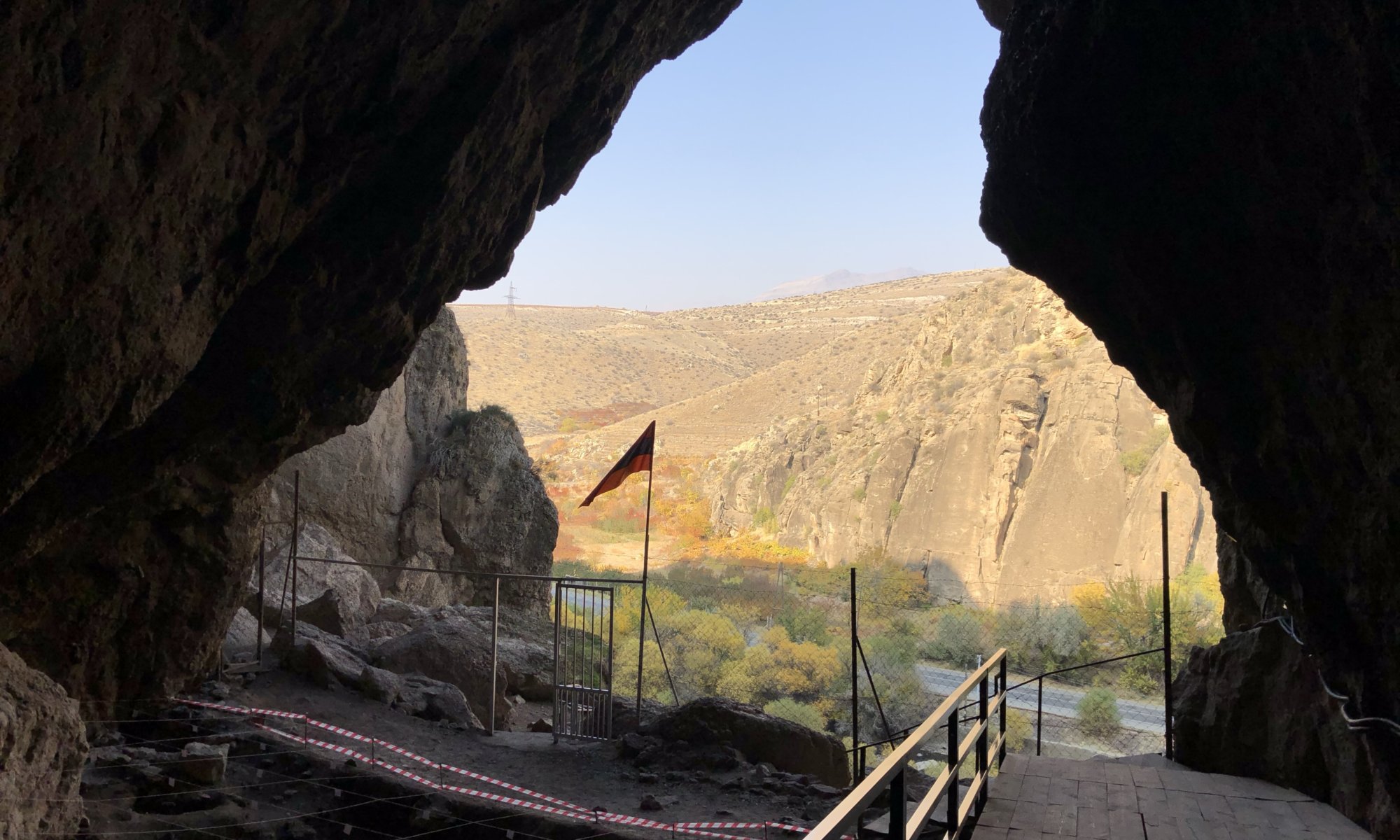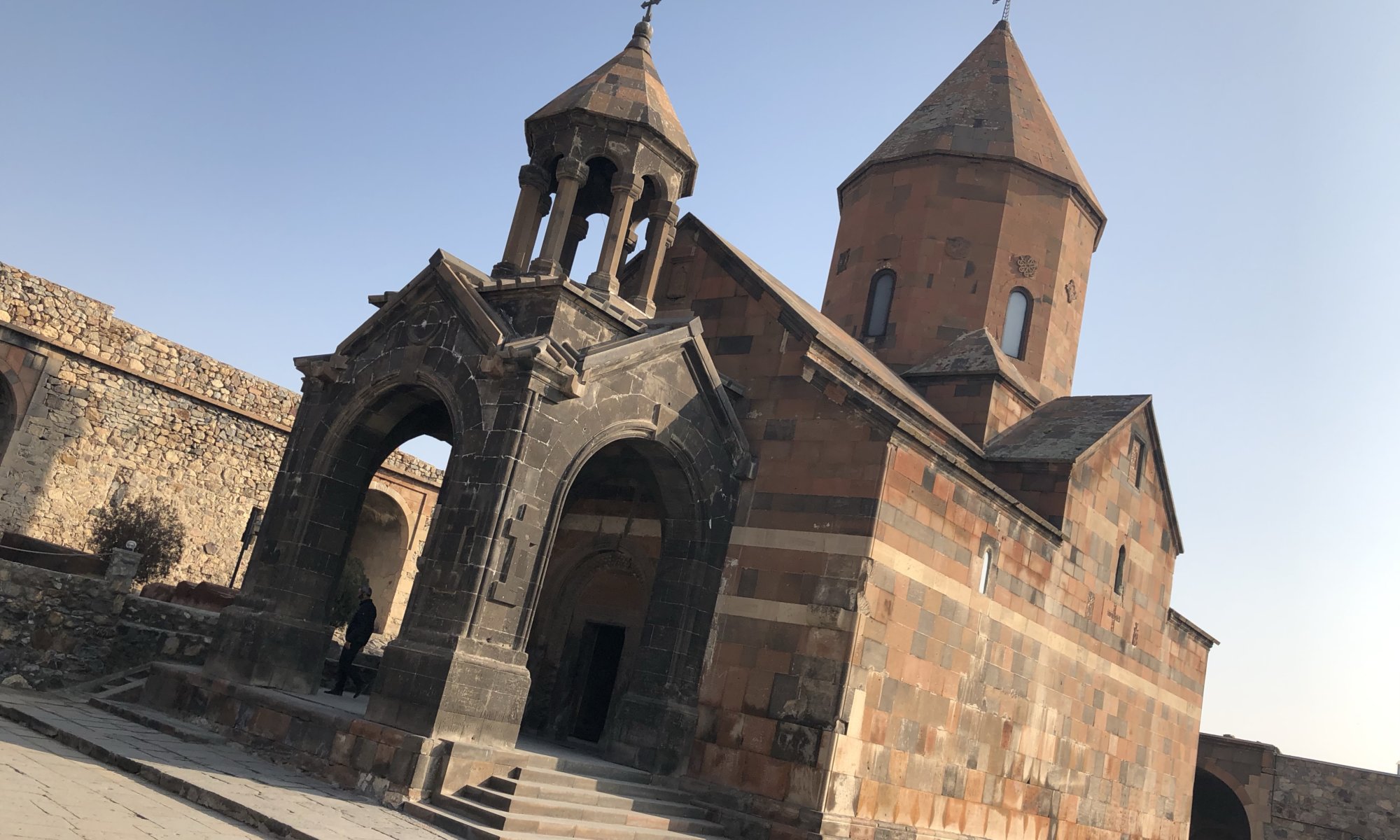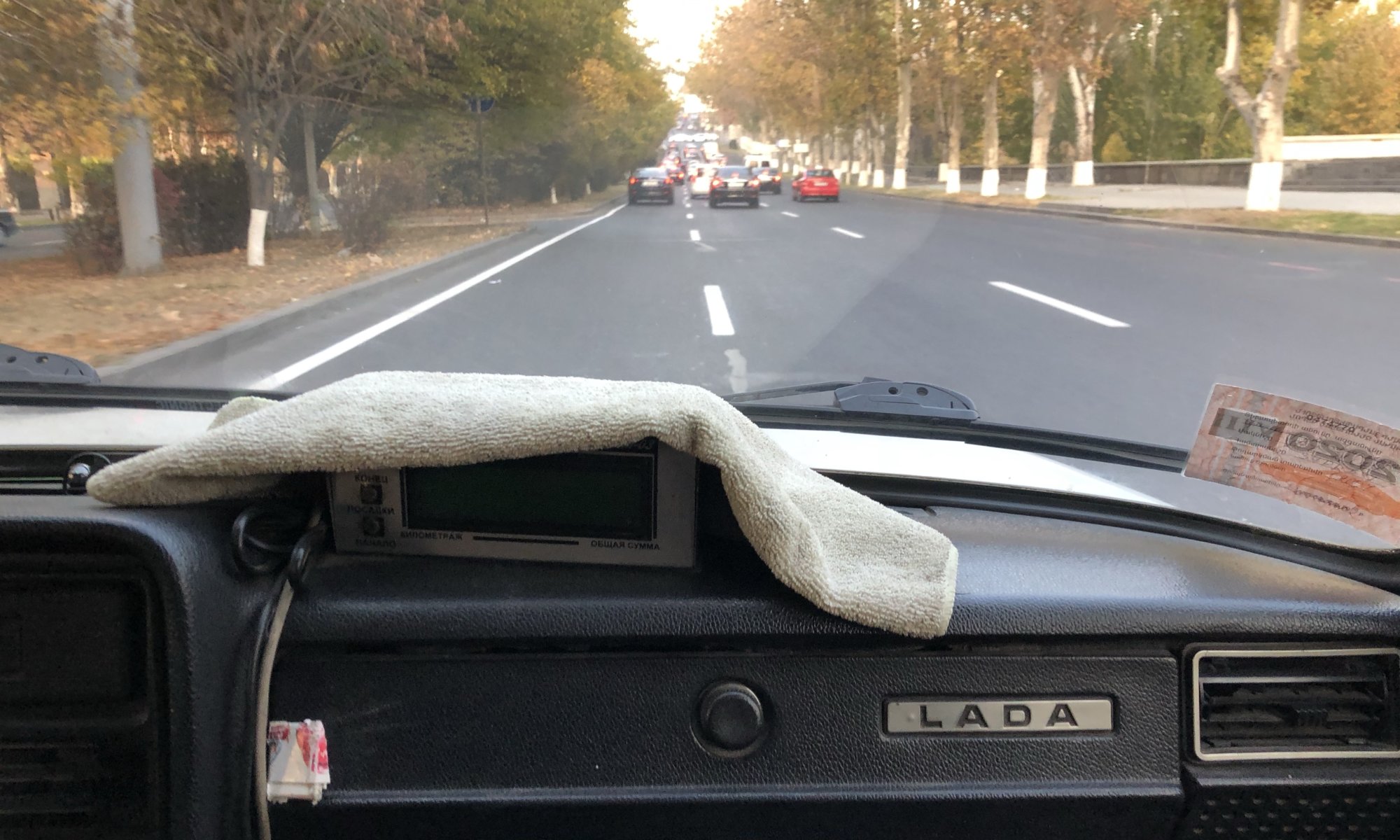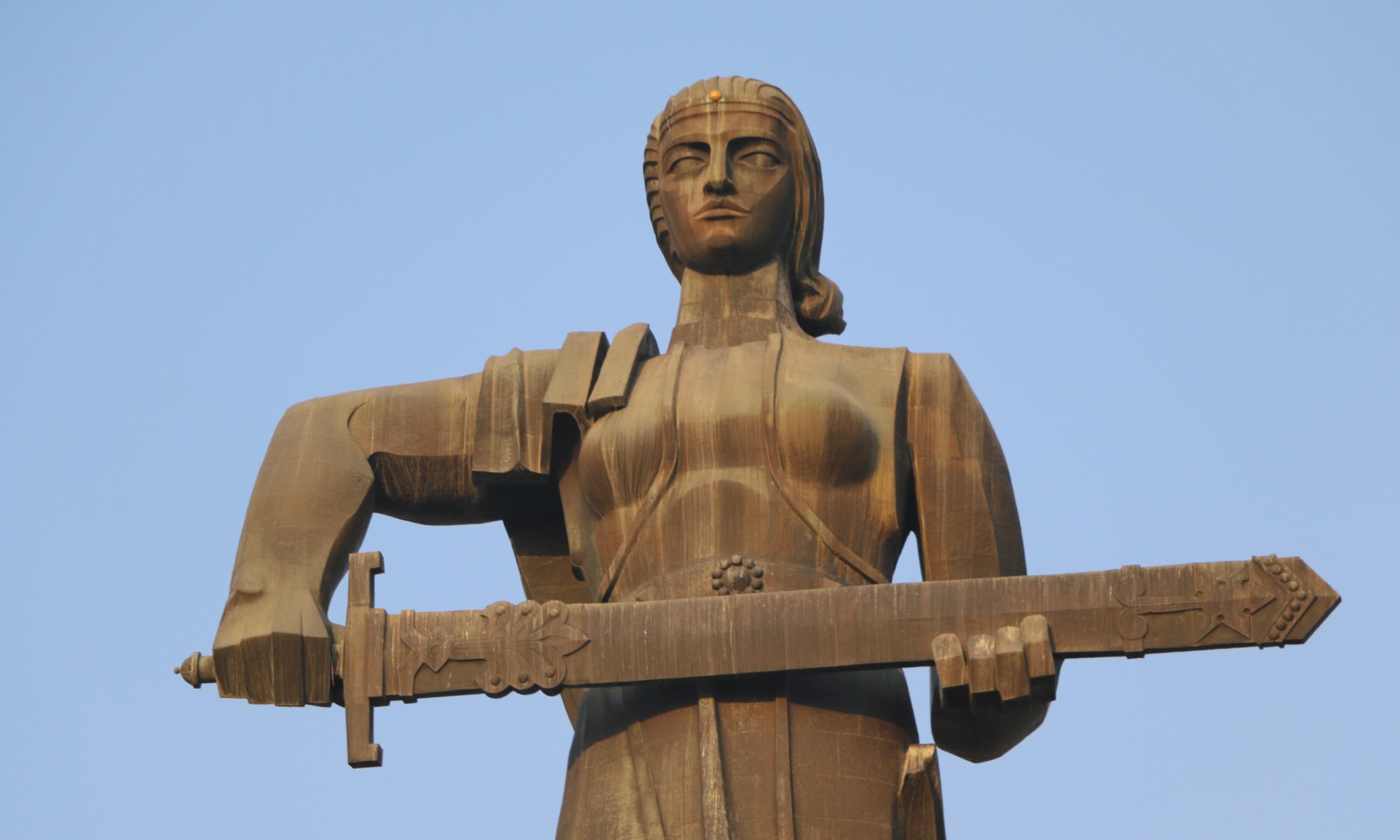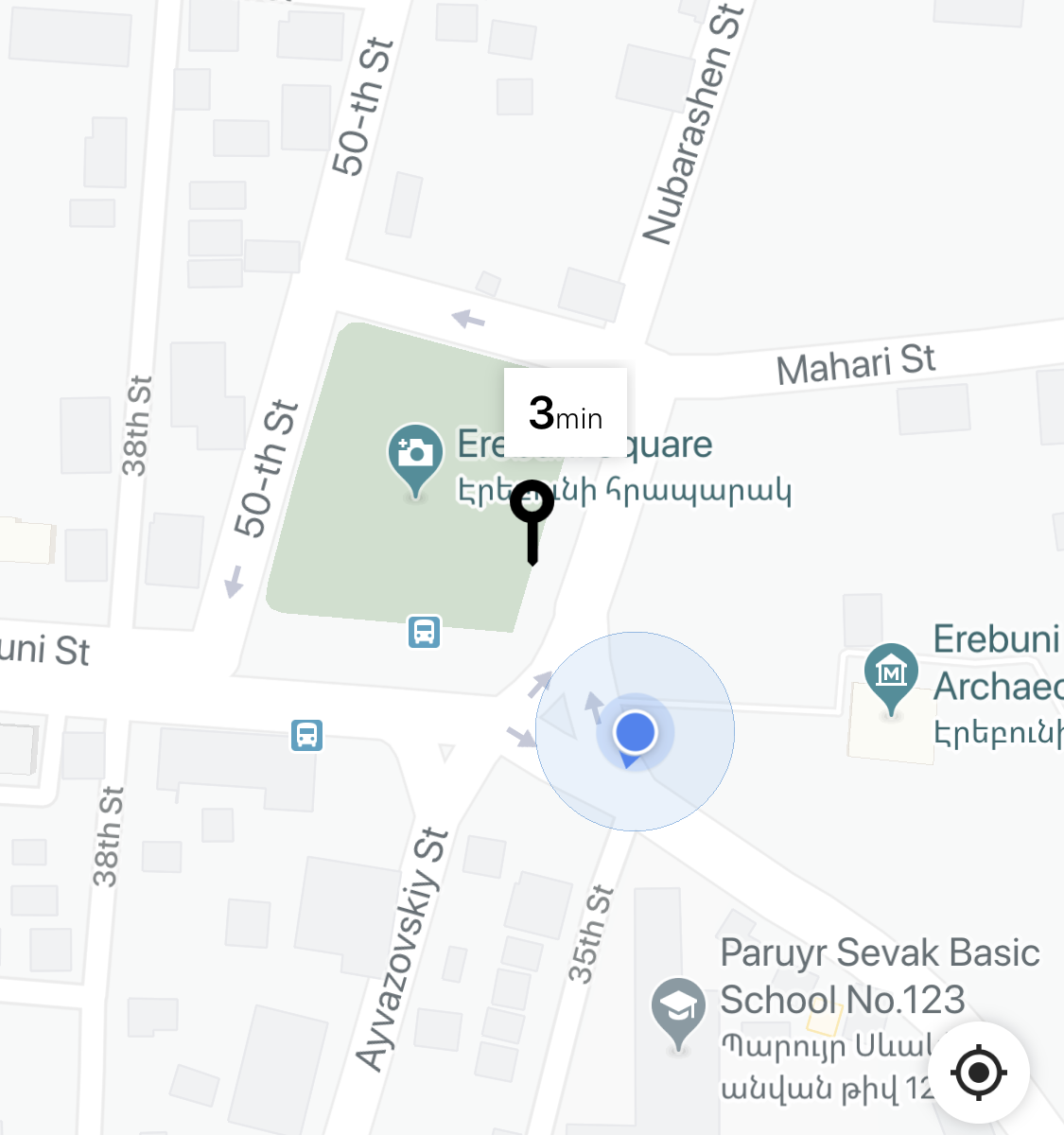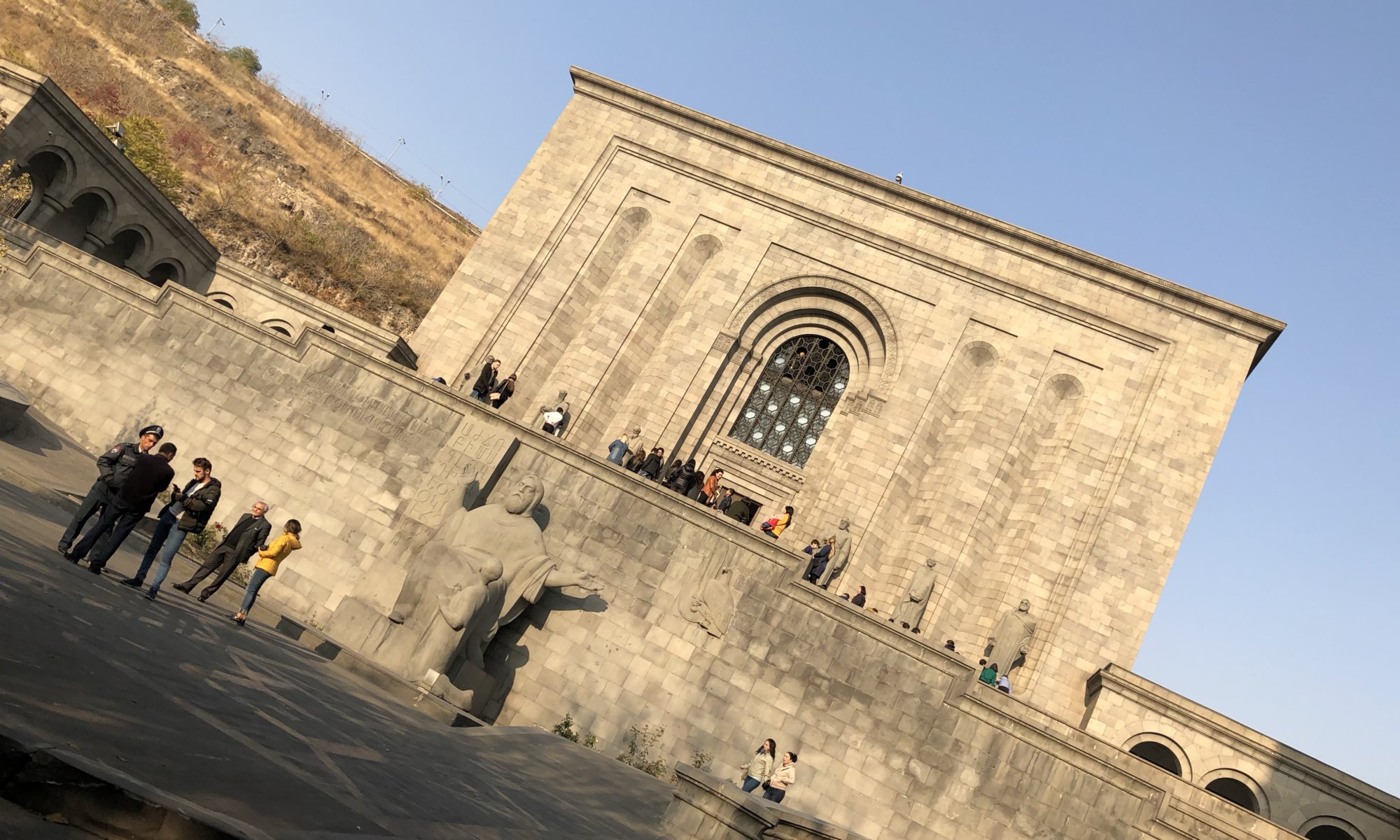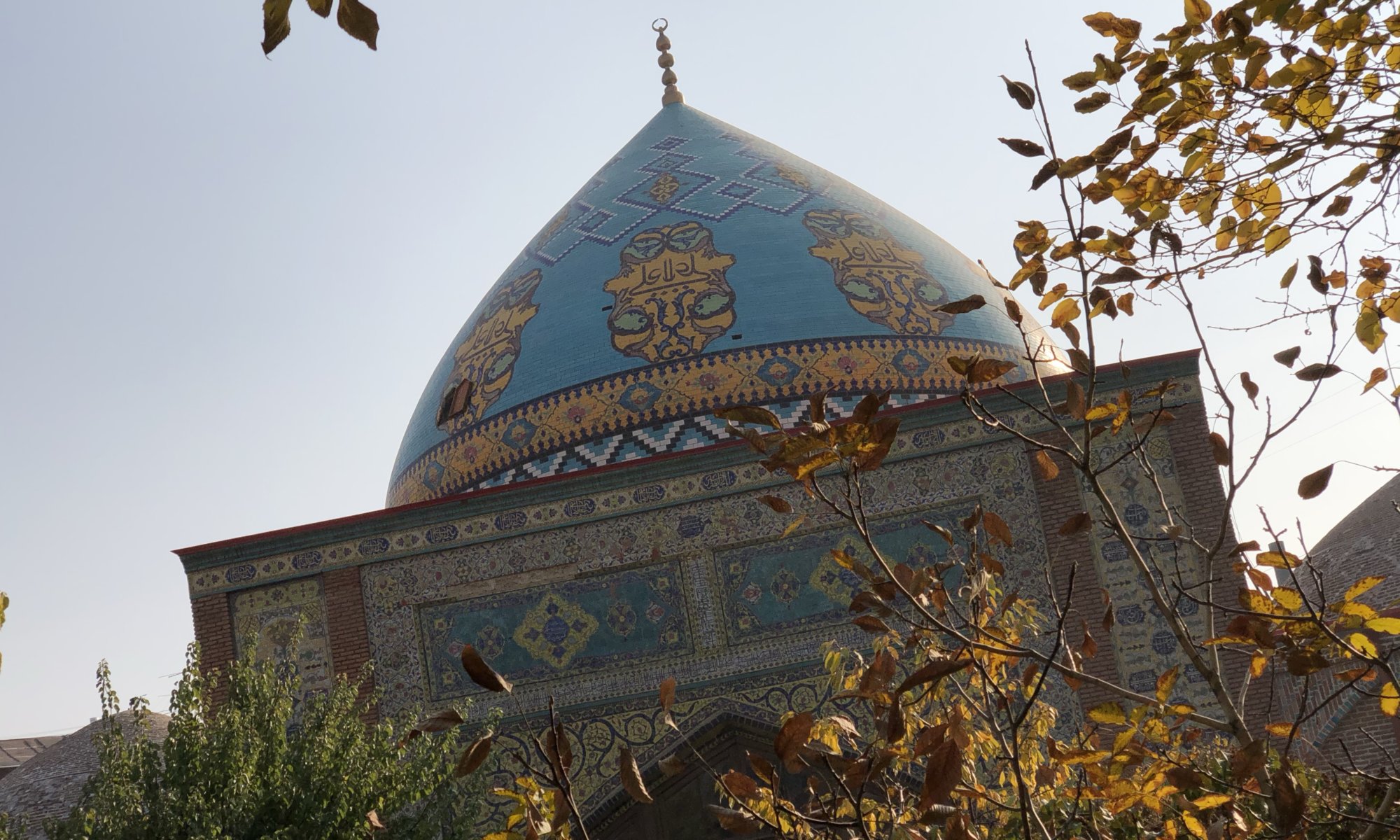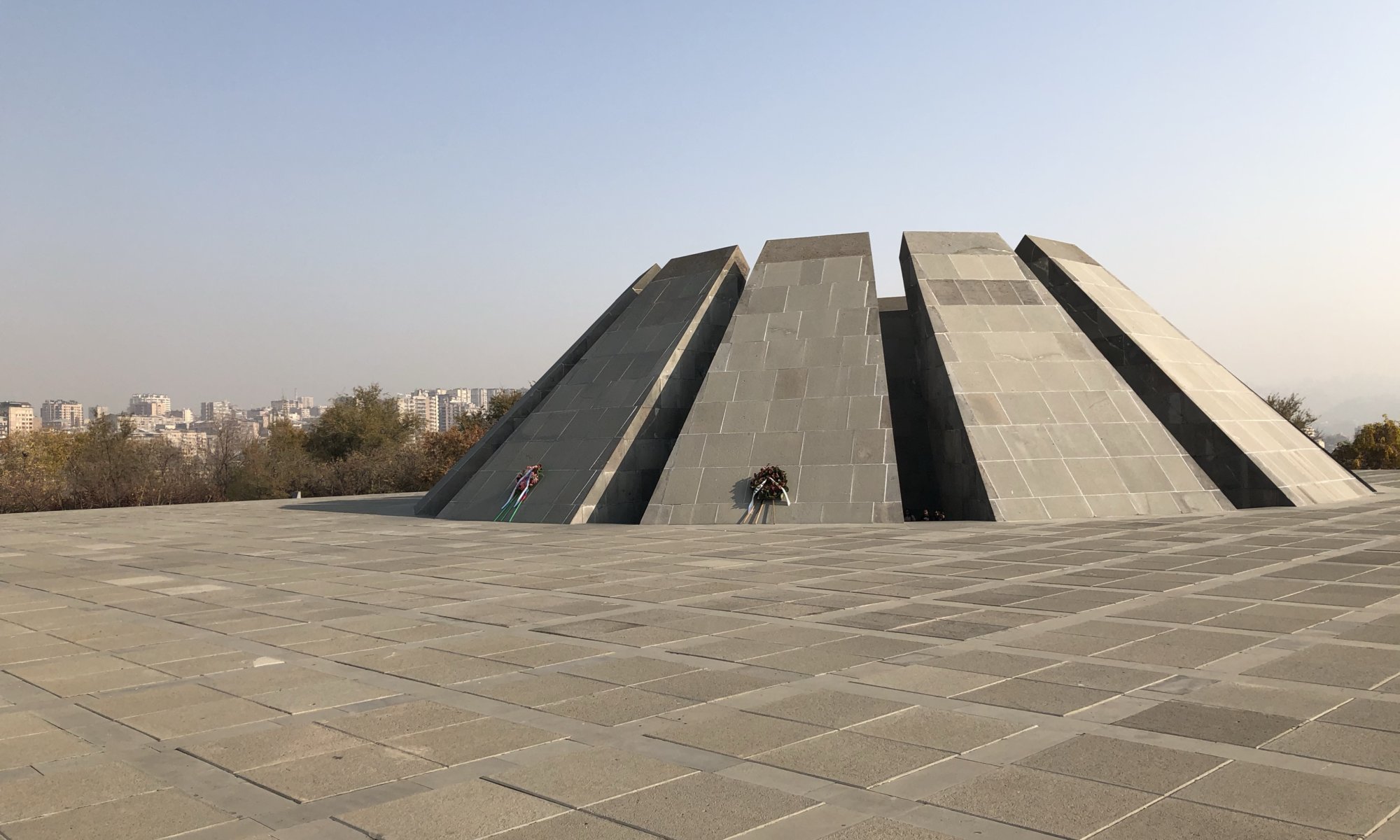If you ever get into the situation to travel through Armenia and need a restaurant between Aserbaidschan and its exclave Nakchivan have a rest at the wonderful Lchak restaurant complex in Եղեգնաձոր. It is located in the valley of a river with mountains in the back and has an artificial lake surrounded by trees. You can have lunch in closed or open wooden cabins – this must be especially great in summer when you can eat above the water.
Continue reading “Lchak”Noravank
Noravank is one of the most beautiful Christian monasteries in Armenia. It is located in the South of the country not far from the city of Արենի at the end of a valley. The different buildings are made from the red stone of the surrounding mountains which works a little bit like camouflage. It dates back to the 13th century, was partially destroyed during an earthquake in 1840 but afterwards restored. Within a protective wall, you can visit three churches and the remains of further buildings necessary for a monastery.
Continue reading “Noravank”Areni-1
A very important place for archaeologists is the cave called Areni-1 or ‘birds cave’ near Արենի, Armenia. It was discovered in 1970 and after excavations, it is believed that it was used by humans since the stone age. Because of the temperature in the cave it could be used to store food – it is like a large fridge. But throughout the cave also religious traces could be found: the heads of young girls, human sacrifices. Within additionally coins from Egypt and the Arab world were found showing that the famous silk road was leading through this area.
Continue reading “Areni-1”Khor Virap
Խոր Վիրապ is a Christian monastery located in Armenia at the border to Turkey. It is located on a mountain and very close to Mount Ararat – therefore it is very often depicted in media about Armenia. The place is deeply connected to the history of Gregory the Illuminator, a Christian martyr who was imprisoned in a deep hole in the ground by the Pagan king. It is said that he survived there for 15 years and three hundred years later a church was built here. Still today people get to this place to visit the hole in the ground.
Continue reading “Khor Virap”Lada
If you visit Երևան, Armenia, you will see all types of cars from different vendors and countries. You might even have a taxi ride in a car that was built for driving on the left side of the road – feels a bit strange as in Armenia you have to drive on the right side. What you will see very often are Russian Lada cars know to be nearly undestroyable and which can be easily repaired. This reflects the strong bonds Armenia and Russia had in the past during the times of the Soviet Union – but also still today.
Continue reading “Lada”Mother Armenia
On a hill above the city centre of Երևան, Armenia, you can find the Haghthanak park (victory park) – accessible on foot by climbing up the cascade complex. Here you will find green areas, an artificial lake, an amusement park with interesting old attractions. It also contains a 56 meters high monument visible from many parts of the city: the Mother Armenia commemorating the Soviet victory over Nazi Germany in World War II.
Continue reading “Mother Armenia”Taxi driver
If you want to order a taxi ride in Armenia, Georgia and Russia than the smartphone app gg is your perfect choice. It is the Uber of this region and all you need to do is to get yourself a local SIM card for your phone (if you don’t have roaming; I got mine with the YerevanCard package) and download the app. After starting it you will see your position on a map and correct it. Then you can choose your destination (obviously from Google Maps data) and order a taxi. That is great as you choose a touristic point of interest or a central square easily.
Continue reading “Taxi driver”Matenadaran
Ever heard of Mesrop Mashtots? Probably not. He was living between 360 and 440 CE in Armenia and invented the beautiful Armenian alphabet. You will get to know him when visiting Matenadaran (meaning ‘library’ in old Armenian language), the Mesrop Mashtots Institute of Ancient Scriptures – a statue of him is standing in front of it. The wonderful building is just a portal; behind it, you will find a museum and its storage carved deep into the mountain to protect the content even in case of an attack with an atomic bomb.
Continue reading “Matenadaran”Blue mosque
The Gaj Dschami is the only mosque that survived Soviet times at Երևան, Armenia. It is a rather plain mosque dating back to the 18th century. Today it is a museum and it has a nice garden at its centre. It was restored during the last two decades with the help of Iran and is today owned by the Iranian embassy in Armenia. You can easily enter the grounds of the mosque and also access the mosque itself – just remember to take your shoes off.
Continue reading “Blue mosque”Zizernakaberd
East of the city centre of Երևան, Armenia, you can find a mountain formerly covered with forest – the Zizernakaberd (swallows’ fortress). On its top, you can nowadays see two things: a giant sports and culture centre for up to 6,000 spectators and more important, the central remembrance place for the genocide against the Armenians in 1915. It is a catastrophic end of a long-lasting history of conflicts based on religion – between the Christian Armenians and the Muslim Turks.
Continue reading “Zizernakaberd”